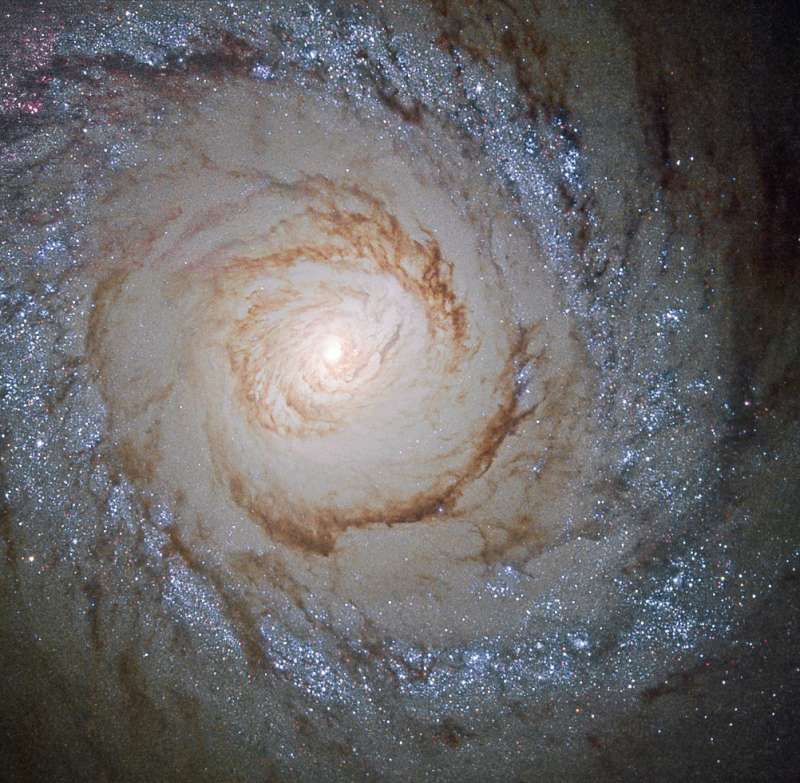
|
Credit & Copyright: ESA/Hubble and
NASA
Explanation:
Beautiful island universe
Messier 94 lies
a mere 15 million light-years
distant in the northern constellation of the hunting dogs,
Canes
Venatici.
A popular target for earth-based astronomers,
the face-on spiral galaxy is about 30,000 light-years across,
with spiral arms sweeping through the
outskirts of its broad disk.
But this Hubble
Space Telescope field of view spans about
7,000 light-years or so across M94's central region.
The sharp close-up examines the galaxy's compact,
bright nucleus and prominent inner dust lanes,
surrounded by a remarkable bluish ring of young,
massive stars.
The massive stars in the ring are all likely less than 10 million
years old, indicating the galaxy experienced a well-defined
era of rapid star formation.
As a result, while the small, bright nucleus is typical of the
Seyfert
class of active galaxies, M94 is also known as a
starburst galaxy.
Because M94 is relatively nearby, astronomers can explore
in detail
reasons for the galaxy's burst of star formation.
|
January February March April May June July August September October November December |
| ||||||||||||||||||||||||||||||||||||||||||||||||
NASA Web Site Statements, Warnings, and Disclaimers
NASA Official: Jay Norris. Specific rights apply.
A service of: LHEA at NASA / GSFC
& Michigan Tech. U.
Based on Astronomy Picture
Of the Day
Publications with keywords: M 94 - starburst galaxy - Seyfert galaxy
Publications with words: M 94 - starburst galaxy - Seyfert galaxy
See also:
- Starburst Galaxy Messier 94
- APOD: 2024 October 9 Á M106: A Spiral Galaxy with a Strange Center
- APOD: 2023 June 7 Á M94: A Double Ring Galaxy
- In the Arms of NGC 1097
- Starburst Galaxy M94 from Hubble
- NGC 5643: Nearby Spiral Galaxy from Hubble
- APOD: 2020 August 16 Á NGC 6814: Grand Design Spiral Galaxy from Hubble
